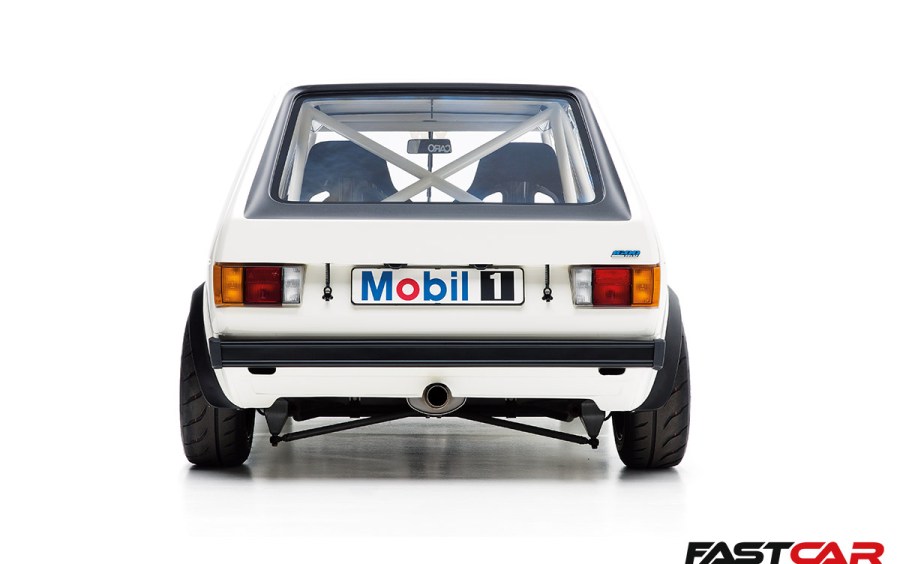A performance exhaust does a lot more than just make cool noises. Here’s all of the best tips, tricks and advice in one handy guide.
Why would you want a performance exhaust? Well, most standard car exhaust systems pose huge restrictions on a tuned engine, or even a standard one. The reason for this often comes down strict policies that manufacturers have to adhere to. This is either due to noise or environmental concerns. Although it can equally come down to a simple matter of ease of ground clearance, or ease of fitting.
Sometimes companies even deliberately make them restrictive so that the standard car isn’t too powerful. As a result, exhaust-based performance gains can be easy to achieve. The gains on an otherwise standard car could only be a few bhp but on turbocharged cars that could be 20bhp+. In that scenario, spool up tends to be improved too.
Lightness is another benefit of a performance exhaust. On particularly restrictive systems the reduced backpressure could in theory help reliability a little. So, now that you understand why performance exhausts can be so desirable, let’s dive a bit deeper into the intricacies.
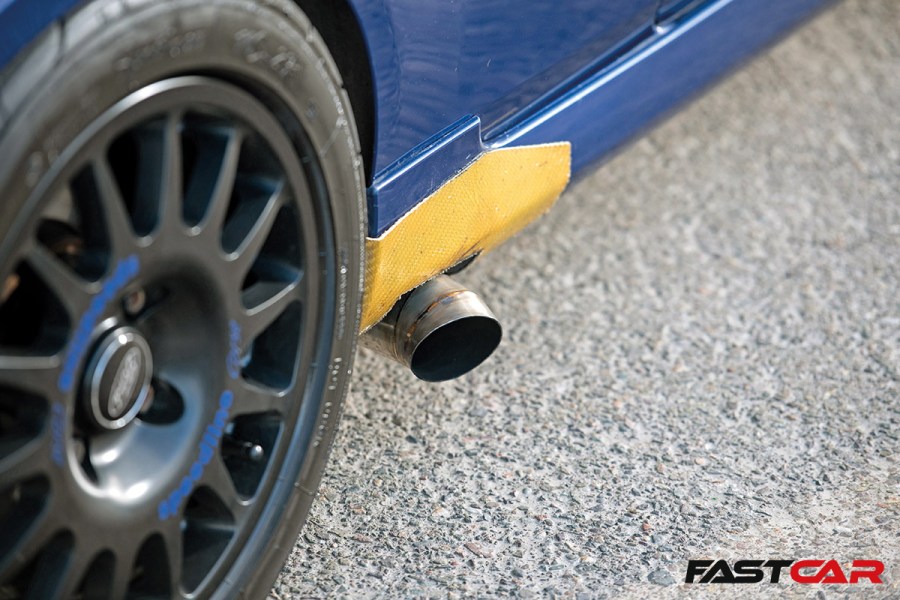
Does a performance exhaust have to be loud?
No, a performance exhaust doesn’t have to be loud. Despite the common preconception, big power and big noise do not run hand in hand. If you had the money and space you could easily build a 1000bhp exhaust system that would pass every track day noise limit.
The reason most performance exhausts are loud is it’s a lot cheaper. It’s also a lot easier, and lighter, to make a loud exhaust. This is because it needs little or no silencers. It also goes without saying that sound is often an attraction to many buyers.
Silencers are not a restriction as long as they are straight-through versions. This means the path of the exhaust gas through the silencer is almost totally unrestricted, despite being quieter.
The main challenge with building a quiet exhaust is the price. A straight three-inch piece of pipe may cost $30 / £25, but a three-inch silencer could set you back $170 / £150. When you may need four to pass noise regulations, plus extra pipe work and labor costs, it’s easy to see why many performance exhausts are loud; if they weren’t many couldn’t afford them!

Track noise limits and performance exhausts
This is a big talking point among track day goers because a large number of cars fail the limits. Generally speaking, tracks have a noise limit of between 95dB and 105dB static. Some have drive-by limits as low as 85dB, low enough that even standard supercars fail the test.
Some circuits have purely static tests. This means you aren’t tested while driving. However, you can still be black flagged for being too loud on track. Some circuits have very occasional “noisy days” where there are no dB limits. Some occasionally turn a blind eye to cars noisier than the advertised limit on special events.
But this is rare, so if you ever want to hit the track you really need a quiet exhaust system. Also be warned that what sounds louder to the human ear isn’t always louder according to the decibel meter. The low rumble of a turbocharged car often breaks the noise limits on track days far easier than N/A; never presume your car is quiet enough or too loud, get it checked.
The final thing worth mentioning is that track days are being banned at locations all around the UK due to noise complaints. Complaints that would never have happened if the exhausts weren’t too loud in the first place. So it’s wise to fit a quiet exhaust regardless of the current rules at your chosen track or airfield.
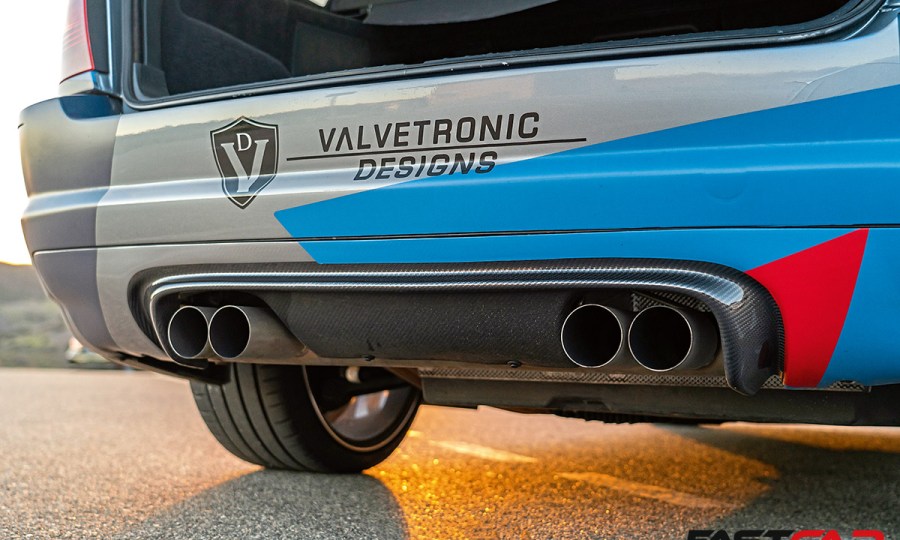
Exhaust noise suppression
As already mentioned, track day noise limits are strict. Even on the road a loud exhaust attracts a lot of attention from the police. So, a quieter exhaust system can be a really good idea.
The trouble is you don’t want to lose any performance. You also may not be able to get a full custom made ultra-quiet system, so what are your other options? Well, there are many, some cheap, some not so cheap; some free flowing, and some far from it!
Tailpipe bungs
These bolt inside the tailpipe and do exactly what the name implies and quietens down the exhaust. Although many people don’t realize this, a bung is hugely restrictive unless your exhaust was far too big in the first place. It can often cripple a car’s top end power output.
Bungs can literally be fitted and removed in minutes, but in the majority of places where you want maximum performance, you also need to be quiet, so their use is somewhat limited. As a quick emergency fix, the tailpipe bung is hard to beat. However, ideal it is not.
Extra exhaust silencers
I’m sure you’ve realized silencing via a restriction is a bad idea for performance. You need to do something better if going fast is your goal. The most obvious and effective solution is extra silencers, meaning no lost performance while still lowering the volume. Getting an extra silencer or two welded into your current exhaust system is an easy job for any competent welder or exhaust specialist.
If you don’t want to go this far and don’t mind your car looking a bit odd, some people fabricate removable extra silencers for track days. A real silencer is far more expensive than simply creating a blockage, but it is the price you have to pay for performance.
Exhaust bypass valves
An option which actually comes as standard on many performance cars is a bypass valve. This, unsurprisingly, bypasses your quiet, but restrictive exhaust at either the flick of a switch or at a certain boost pressure. This lets the gas out of a less restrictive but louder exhaust, generally a straight pipe. Again, this keeps static and slow speed volumes to a minimum, but won’t stop you being black flagged for excessive drive-by noise.
Flapper valves
Working in a similar manor to bungs are flapper valves, which are controlled either electronically or mechanically. When closed, they restrict the exhaust system and drastically lower the exhaust volume.
Unfortunately, when closed these are even more harmful to power than bungs, and we have seen turbo cars unable to reach even half their desired boost pressure with one of these fitted and closed as they are so restrictive.
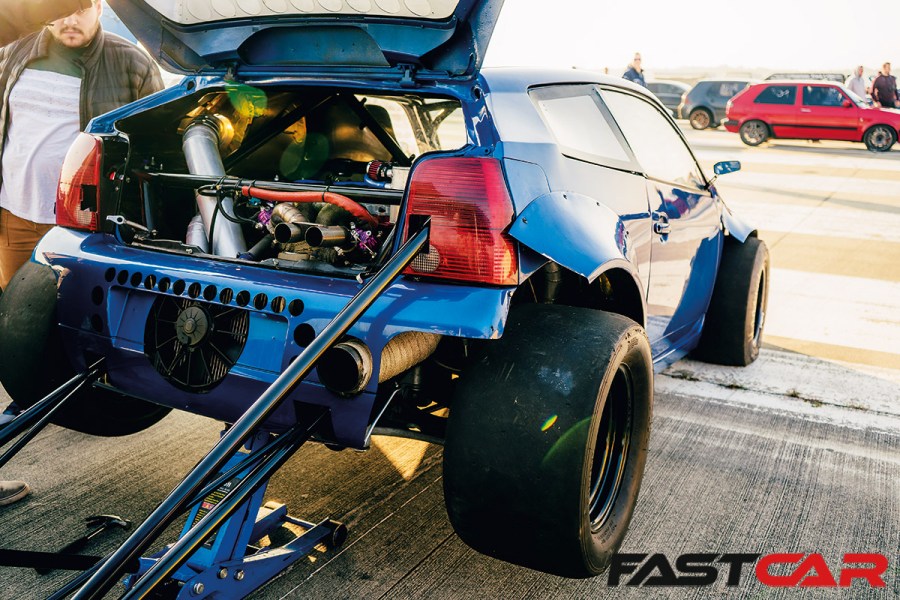
Exhaust tailpipe direction
The most overlooked way of reducing your exhaust volume are cleverly placed exhaust outlets. Have you ever noticed a lot of race cars have turned down tailpipes so the exit actually faces the ground? This is so the sound waves hit the ground and are either absorbed or deflected everywhere, effectively and noticeably reducing exhaust noise.
Some people take this even further by having a side exhaust exiting from the opposite side of the car to where they know the noise meters are placed. A variation on this is to run one silenced side exit either side of the car, splitting the exhaust gas, and therefore the noise, 50-50 between each side.

Performance exhaust flames
It’s not uncommon to see a tuned car emitting flames from the exhaust, and the frequency this happens can be affected by the exhaust system. If you removed the entire exhaust from a car and revved the engine while looking at the exhaust ports you would see flames emitting from them on any engine. But the exhaust length and silencers make these flames invisible at the tailpipe.
On a more powerful car, especially one mapped to still inject fuel when off throttle, the flames can sometimes reach out of the tailpipe. Things like silencer boxes can reduce the chance of the flames a little. Conversely an exhaust that spits flames generally burns up the silencing material a little faster, reducing its effectiveness after a while.
As cool as exhaust flames look, the police really don’t like them, as our contributor Stav once found out in the past when he was handed a £750 fine for “Endangering the public”, and “Dangerous emissions from a motor vehicle” amongst other things due to his exhaust flames…
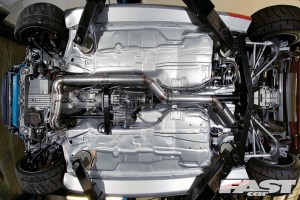
Do engines need backpressure?
Once again, the simple answer is no, despite the common myth saying otherwise. Fitting a huge exhaust system to certain cars may have bad effects, but this isn’t due to reducing backpressure. Backpressure is never a performance enhancer; you want as much exhaust gas out of your engine as quickly as possible. This means, especially on non-turbo cars, careful choice of pipe lengths and sizes so the exhaust gas moves as fast as possible out the exhaust.
On turbo cars it is simple, as manifold design has less effect and a huge post-turbo exhaust will only give gains with no losses. On non-turbo cars, although we won’t go into detail as it’s a hugely complex subject, any low down power lost isn’t down to lack of backpressure, it’s down to the diameter and scavenging effect of the new exhaust design moving the power band to higher in the rev range.
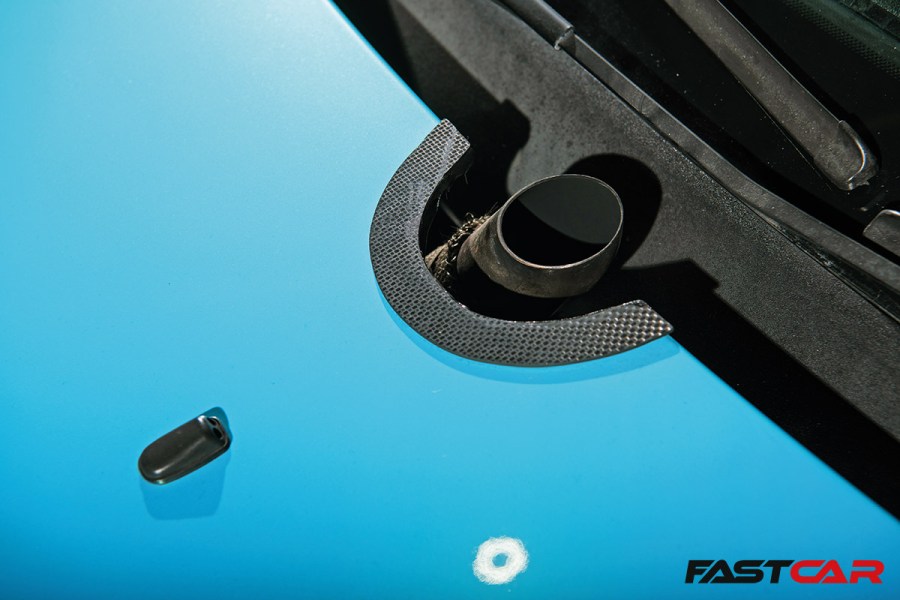
Screamer pipes
Most people will have heard of the term screamer pipe. It basically refers to a separate exhaust pipe coming from the wastegate of a turbo car. The “screamer” part of the name is due to this pipe normally being unsilenced and incredibly loud. As a wastegate doesn’t open until full boost, a screamer pipe wouldn’t cause any issues when driving normally. Or for an MoT. But the noise is almost assured to get you black flagged on track.
There are two solutions to this. Either simply plumb the screamer pipe back into the rest of the system, which would quieten it down but potentially lose you power. Or keep the screamer pipe separate, but add a silencer or two to quieten it down. This option is the best for performance and noise reasons, but it adds significant extra cost and weight.

Performance exhaust emissions
Almost any car built in the last twenty years will need a catalytic converter fitted to pass an MoT emissions test. Unfortunately due to their design they are generally not very free flowing; exactly the opposite of what you want for performance. There are various ways of getting around this, namely a sports cat, a de-cat pipe, or a cat bypass valve.
A sports cat is the most effective solution. This basically means a larger freer flowing cat than the standard item, increasing flow without affecting your emissions. Unfortunately, sports cats are expensive and at high power levels can still pose a restriction, possibly necessitating the need for parallel sports cats.
The cheapest and simplest option is a de-cat pipe. This removes the cat altogether and replaces it with a straight piece of pipe. However, doing that will cause your car to fail any emissions testing. You’ll have to refit the cat come MoT time and hope you don’t get pulled over for a random emissions spot check. And besides, in this day and age, we need our cars to cause less pollution – not more…
The least common, but possibly the best overall solution, is to use an electronic or vacuum operated bypass valve. This lets the exhaust gas pass the restrictive silencer when needed, but travel through it when the car is being daily driven or checked for emissions.

Performance exhaust legalities
There is always a lot of discussion about the legality of exhausts, especially about where on the car they exit. Unfortunately, it is a real legal grey area. What one police officer or vehicle tester may be happy with, another may not. The reality is excessive noise is likely to get you noticed by the authorities, as will ones exiting from unusual places.
If you want the least bother, make your car as quiet and subtle as possible. But as long as they are quiet and safe enough, side exit exhausts, and even front bumper exits, are not illegal. Some vehicles come with both of these options as standard.

What are exhausts made of?
There are three types of materials commonly used in exhaust systems. Mild steel, stainless steel, and titanium. Mild steel is by far the cheapest and is quite durable. However, due to its susceptibility to rust and stainless steel prices lowering, mild steel exhausts are rare.
Stainless steel is the most common type of exhaust material due to its resistance to rust. However, it can be brittle, especially on exhaust manifolds on turbocharged cars.
The final material is titanium which shares similar properties of stainless steel but actually weighs nearly half as much. This makes it the material of choice for serious race cars wanting to shed every last kilogram. The disadvantages of titanium include the fact that it’s very hard to weld properly, but most of all, cost. They’re generally around four times as much as a stainless system. So full titanium exhausts are rather rare and for big budget performance cars only.
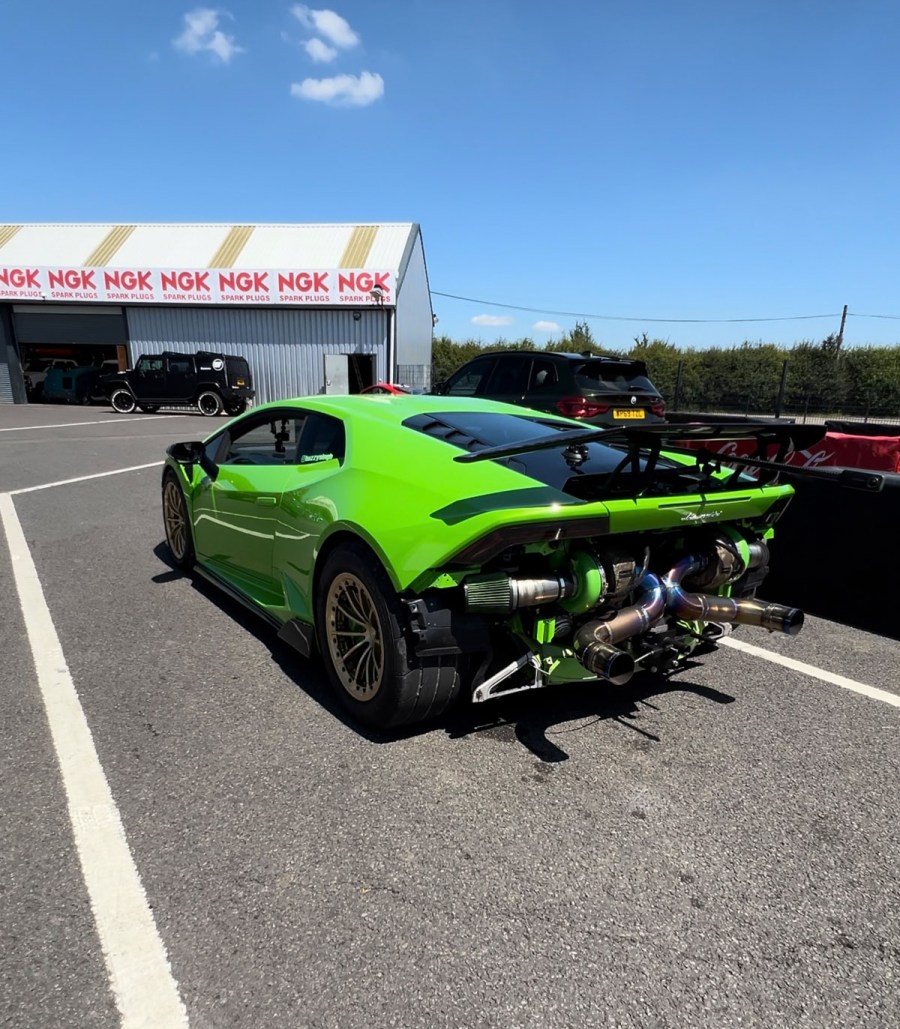
Should I get a custom exhaust?
Although many people associate the words “custom exhaust system” with a one-liter Saxo fitted with a brace of six-inch tailpipes, the majority of big power cars will have had at least some of their exhaust system custom made. In fact, companies like Milltek are even developing fresh performance exhaust systems for new-age hybrid sports cars.
For many people custom exhaust components are fitted due to changes in the car’s turbo setup. There may also be a lack of adequate off the shelf parts, or they want to to make their current system a little quieter to pass track noise regulations.
There are countless custom exhaust manufacturers around the UK, all with varying equipment and skill levels. So, make sure they can build you the exact part you want at the correct size to avoid confusion. This is particularly true when it comes to larger bore piping, as not all companies are able to do it all. Need some inspiration? Check out some of the best sounding cars of all time.
Love modified cars? Be sure to check out our Fast Car Entertainment event series!

